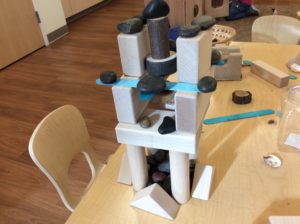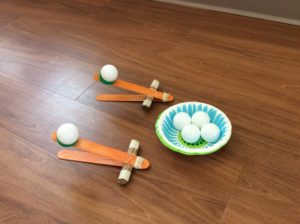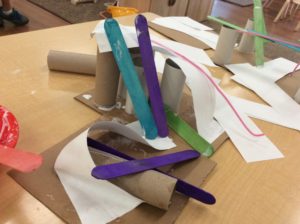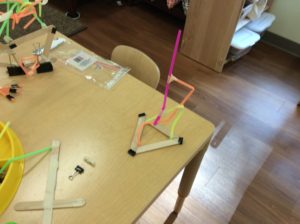My work mentoring new teachers at a local child care center
“Having Drew at my center was helpful in so many ways. He helped lay the groundwork for my teachers to be thoughtful in the classroom. He also challenged me to clarify our center’s values with our staff. It was a great experience for everyone!” –Andrea McKenna, Center Director
A local Child Care Center Director contacted me to act as a mentor to some newly hired school age program staff. The Director shares my philosophy and approach to caring for and educating young children and trusts me to help put the new staff on a good foundation. These staff members are new to the field and this is their first job in a child care center. I was to focus mostly on implementing developmentally appropriate and evidence based practice, staff interactions with children, and upholding the center’s philosophy and implementing its practice.
As is my common practice I began by observing and recording what I observe. This allows me a good starting point. I began working with the staff on implementing the center’s philosophy and practice. This center is determined to provide a stress free, no pressure oasis for these children after a highly structured and demanding day at school. I worked with and spoke with them about providing unstructured time for the children to relax, play, read, do homework, explore, etc… after their busy, strict, and structured day at school. To provide a relatively stress free environment by severely limiting any demands they may have for the children. To say “Yes” as often as possible, and that the children should not be “required” to do anything, and allow for them to do what they want (within reason, i.e. not running on tables, throwing blocks, etc…) as long as they are not hurting others or destroying things. We also discussed and I modeled many examples of ways to provide stimulating, developmentally appropriate materials and activities, with a “provocation”. This allowed the staff to see firsthand the first rule of behavior management, to keep the children happily engaged in play, by following their interests and abilities.
Now when the children arrive, they are invited into the classroom and can unwind by eating a healthy snack, read in a cozy location, or just relax. They can do homework in a space offered to them for that purpose, or play and explore the materials provided in the classroom. The environment is relaxed; there are no demands or requirements and no pressure. Just what the children need! I provided some examples of stimulating “provocations” in the manner of the Reggio Emelia approach and showed how the children can be inspired in their play.
I set up this simple provocation with tree blocks, blocks, craft sticks, cardboard inserts, shells and stones.
The children came in to the classroom and many of them immediately came to the table and creatively used these materials. Below are some examples of their use of the materials.
I also set up other areas of the room to show the teachers how each area can be set up to stimulate play and exploration.
The children enjoyed racing cars down the ramp, then they “improved” the design and experimented with different blocks and ideas about how to make this even more fun. Below is some of what they did.
I made some shovels out of milk jugs for all of the sensory bins in the center. For the school age classroom I made some simple tongs and catapults out of craft sticks, rubberbands, cardboard, milk tops, and clothesline clips.
As the children came in that day they saw me making the catapults and were inspired to create their own, improve on my design, and to even create their own “things” out of the materials. This gave the staff an opportunity to witness how children, being engaged, following their own interests, and just plain having fun, leads to a peaceful environment, where the children can learn and succeed.
These materials were provided.
One child improved on my catapult design to make a “triple catapult”.
Their creativity and experimentation soared! These materials were out for several days and the children loved it and created many of their own “things”. Below are some examples.
Three of the children designed and created working bows and crossbows!
One day the teacher set out cardboard, toilet paper tubes, and bowls of glue. This was intended to be a paper mache’ project. The children then went over to the other table that we had set up for a few days, and brought some materials over to use all of them together. This experience I used to speak with the staff about process oriented, open ended, art. The children were so creative!
I believe that the teachers witnessed the children at their happiest and at their best! They were able to see the creativity, and problem solving skills being used by the children. They were able to see the children experiment and work out their own learning process through trial and error.
They then embraced the vision and I tasked them with setting up the table with their own provocations.
One teacher set this out.
Here is just one example of what the children did with the materials.
Stacking stones takes some serious patience and fine motor skills! These children persisted and succeeded!
Another day a teacher set out straws, tape, craft sticks and a variety of clips. Below is some of what the children did with the materials.
Throughout this entire process I also addressed developmentally appropriate and evidence based practice, child/adult interactions, and behavior management techniques with the staff. I spoke with them about modeling the behaviors that you would like the children to exhibit, and through that, will you earn the respect of the children and build relationships with them. I spoke about “embracing the chaos”, meaning that often what adults perceive as “chaos” is really children having fun and expressing joy, and how we need to allow for that. I also spoke with them about appropriate interaction, communication and discipline with the children. I was able to model all of this as I was always right there in the classroom with them as a part of their teaching team.
I worked with the staff on positive interactions with the children. I spoke with them about the 3 R’s, relationship, responsibility, and redirection. I modeled and spoke about maintaining a soft tone of voice. Speaking softly, but firmly, and with finality and conviction. Getting down to eye level while speaking to children, and remembering to use positive physical contact, with boys especially, while speaking to them in a disciplinarian way. I also worked with the staff and modeled using positive language phrasing such as “you may throw balls, but not blocks”, and “save your running for when we go outside, please walk inside”, etc… We talked about using “If/then statements” with the children, giving a five minute warning before transitions, and strategies for getting the children’s attention, lining up to leave the room, and what to do when children yell and hit the teachers. I also shared with them about being intentional and responding to children not reacting to them.
I worked with the staff on helping the children with their social skills. The teachers’ primary role in this is to help facilitate conversations between children, especially during conflict. I recommended that they remind the children to use the name of a child that they are trying to talk to, and to be specific and explicit about what they want the other child to do or stop doing. I spoke with them and modeled allowing the children a reasonable amount of time, during a conflict with peers, to work it out on their own. Give the children a chance to solve problems together as you facilitate the discussion between them. Teachers can use “active listening” skills with the children and “I statements”. Ask them open ended questions like “what can we do about this problem?”, “what do you have to say to___?” I shared about why it is not appropriate to force children to apologize, allowing “natural consequences” to teach them how their behavior affects others and the environment, and about how solving problems for the children robs them of opportunities to work things out among themselves and learn valuable skills. And so much more!
This was an amazing experience and I believe that I successfully laid a good foundation for these teachers in this wonderful program. I look forward to working with the staff at this center again!
































